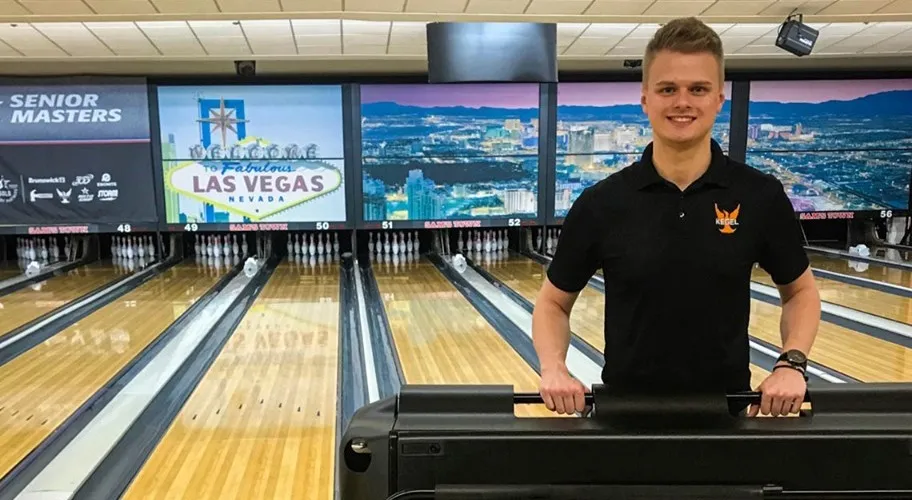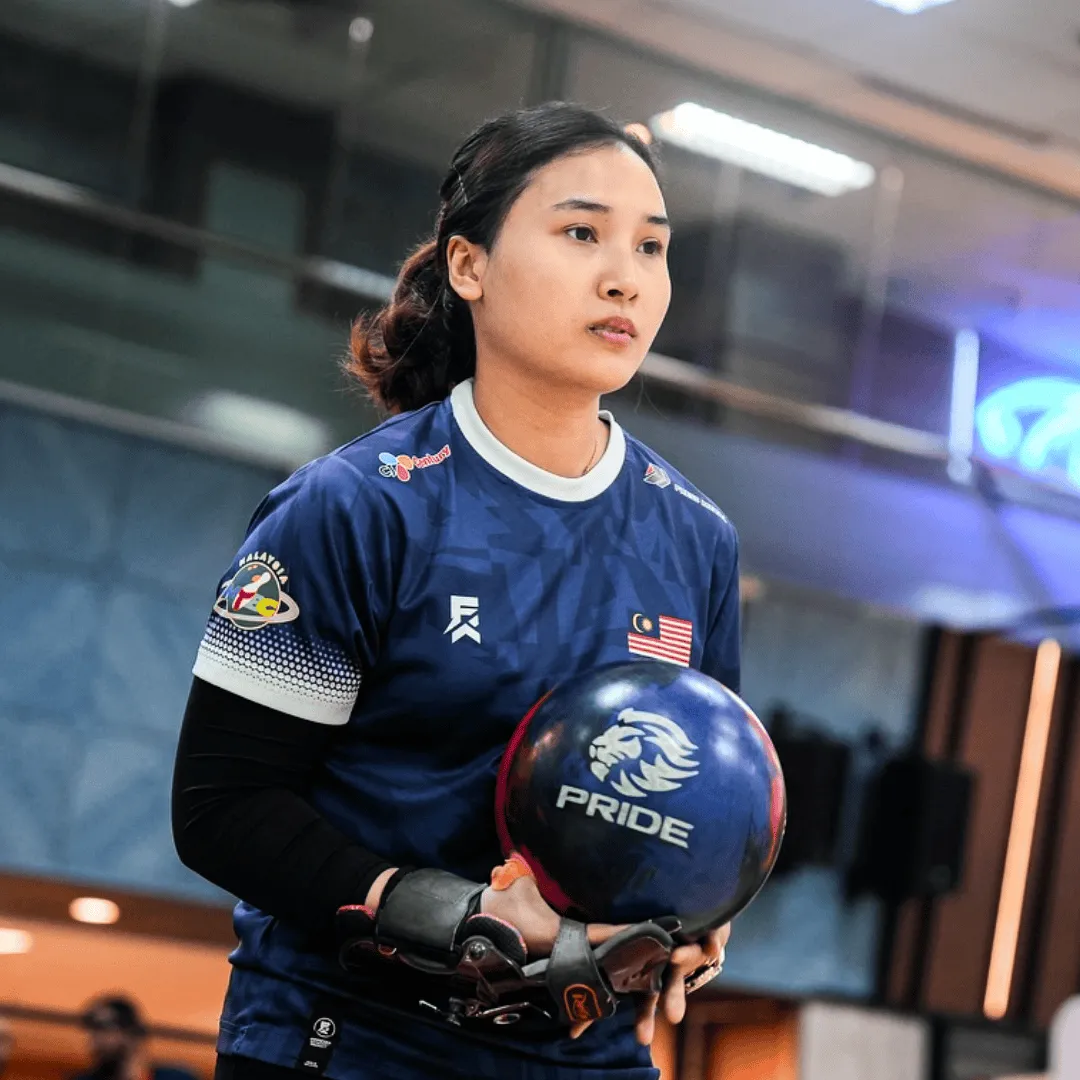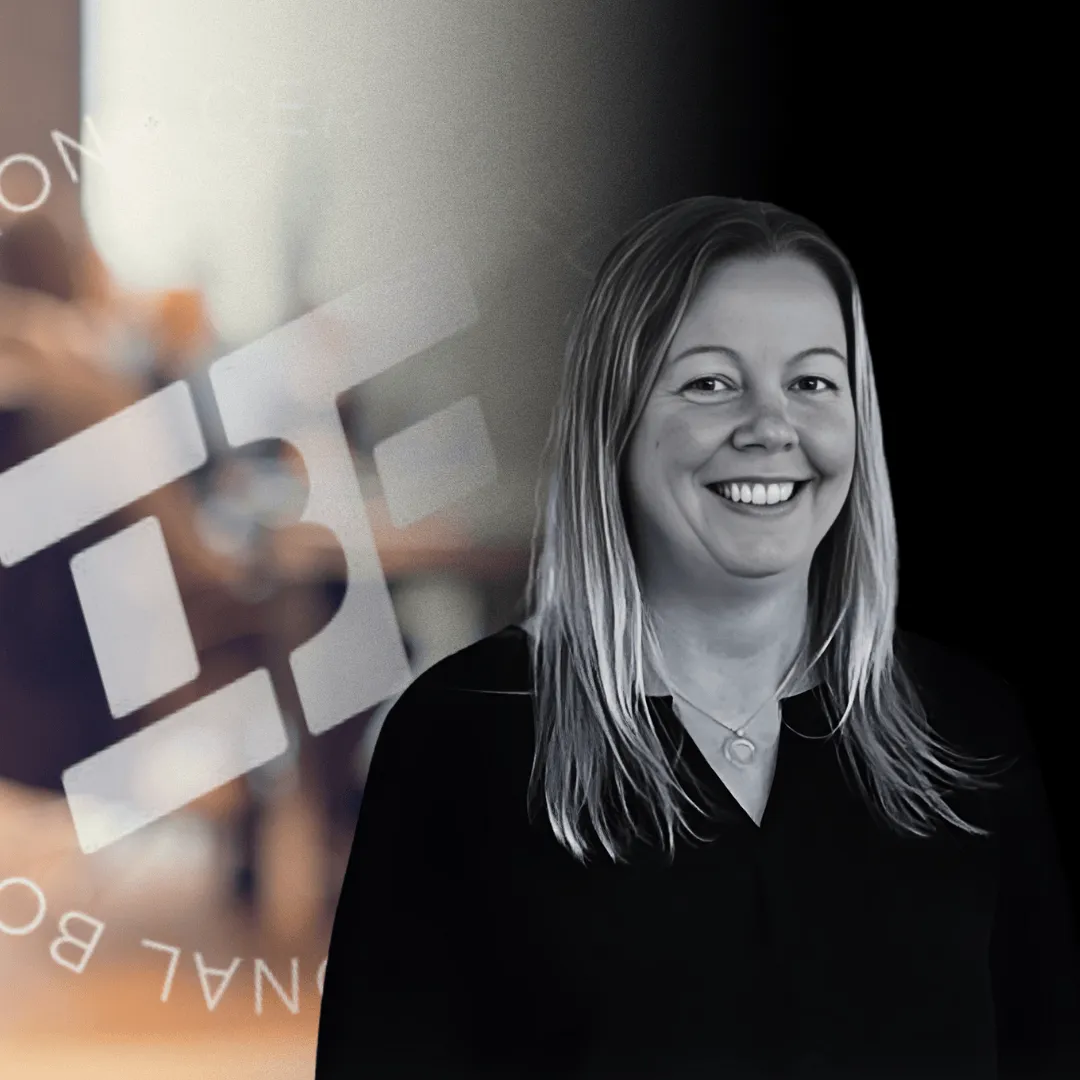One of the best Lithuanian bowling players of all time made the whole American bowling society check where our little country is. He took PBA (Professional Bowlers Association) Southern Region Rookie of the Year title of the 2019 season. All about his achievements, hard decision to move to the USA, and unfading desire to bowl in an exclusive interview with Kristijonas Sergejevas.
You are undoubtedly one of the most talented Lithuanian bowlers. A virtuoso of the first trick shots on the YouTube channel and probably the only Lithuanian bowler currently known outside the Atlantic. But how did this sport emerge in your life? When did you start bowling?
I started bowling when I was about 10 or 11 years old. My dad would take me to a bowling alley on weekends and let me bowl. I was enjoying the game and wanted to bowl more and more. I tried other sports like swimming and basketball, but bowling was the one that I stuck with, which now looks like a good choice.
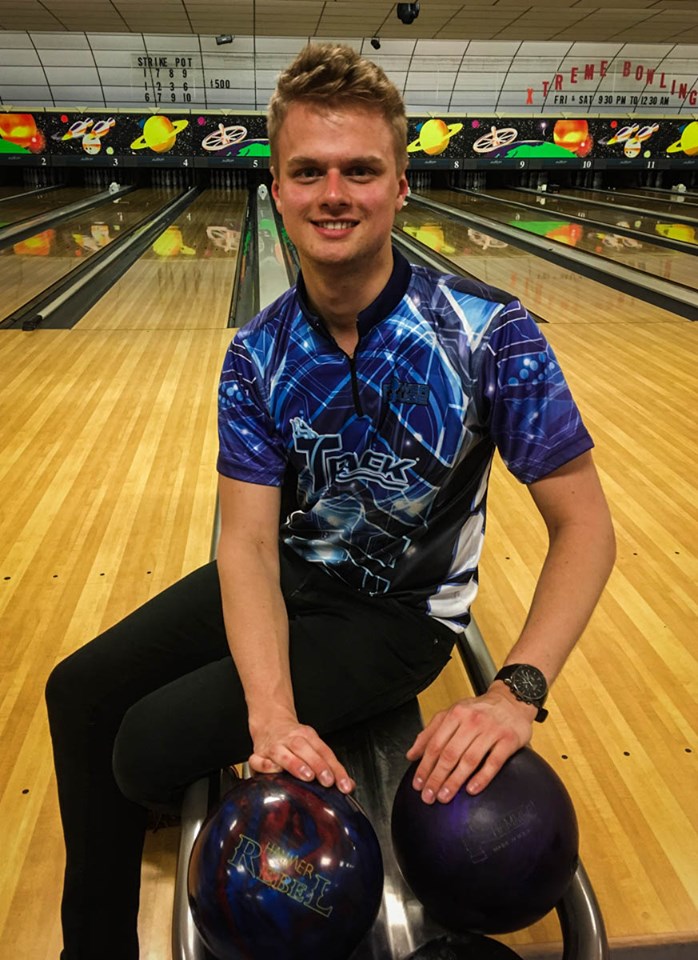
When did you start participating in LBF (Lithuanian Bowling Federation) ranking tournaments? When did you sense them not being enough to fulfill your bowling drive?
My first official tournament was in 2002. It was a National rankings tournament in my hometown – Kaunas. There was no youth division back then. I believe I got to bowl one squad and was ranked with men, so making it to the next round was nearly impossible for me. I do not remember how I did, but I know that tournament inspired me to keep bowling.
Back in the day, I was happy to be able to compete in any tournament. I was fortunate enough to have the ability to compete in many national and high-level international events when I was younger. I always enjoyed bowling in any tournament; therefore, the hunger for the game was always there regardless of the tournament's importance. One thing I knew for sure was that I needed to get much better to achieve something outside Lithuania.
Please remind the readers about your most memorable tournament moments or most significant achievements while still here in Lithuania.
I have many excellent memories from various tournaments before I left Lithuania. The most memorable wins were my National Championships: First National Youth Championship in 2006; First National Men's Championship in 2009 (I believe I am still the youngest bowler to win Men's title); First National Team Championship in 2009.
European Youth Championships in 2009 was also very special because I happened to qualify for the "Masters "event, which any Lithuanian youth bowler had never done.
I remember the last tournament I bowled in Lithuania in 2016, where I won my second National Men's Championship. I stayed in Lithuania for the 2015-2016 season, which allowed me to bowl some tournaments. The ranking tournaments during the season could have gone better for me. I couldn't win. Something was missing. It all came together at the National Championships, where I had one of my best tournaments. Great memory, for sure!
What made you decide you wanted to move to the United States? Was leaving your homeland difficult? How did you pick a university in the first place? What did your typical day at a university look like? Was it bowling all day long?
I am trying to remember when I decided to go to the United States. It was my mum that decided for me. We both knew that I needed to get better coaching if I wanted to achieve something more in bowling.
I applied to several universities and got replies with their interest before I heard about WIU (Webber International University). I learned about WIU at European Champions Cup in 2009, where I met Sid Allen. Sid is a World-Class coach who was coaching Team Latvia at the time. He was the one who recruited me to WIU. I chose that school mainly because of its bowling program and practice facility – Kegel Training Center. Working with the top coaches in the world, getting a good education, and living in sunny Florida sounded like a great deal to me.
Leaving my home country wasn't easy. I was still determining where and how I would get there. The thought of living by myself was scary but knowing that I was getting an opportunity to train in the best facility in the world kept me going forward. Once I arrived and settled in, I realized I was in the right place.
There was a decent amount of bowling done every day. However, student bowlers do not have the whole day to bowl. A typical day for a bowler athlete looked like this: 3 classes in the morning and team practice in the evening. Sometimes, a bowler has individual practice during the day. Bowlers, like any other athlete, also have to attend team and individual workouts in the gym. Add homework and tournaments over the weekends; you can see how busy the schedule was.
When did you bowl your first 300? Do you still keep count of your perfect games? What helps you keep the hand firm and legs straight when the only thing separating you from perfection is a single shot?
My first 300 happened pretty late in my career. It was in 2011. It was the summer after my first year at WIU during the V.I.P. Cup in Klaipėda. I had many 299s and 298s before my first 300. I now mainly count 300 games I achieve in tournaments, of which I now have 10.
The last shot of a 300 game is as hard as you make it. It is all about how you perceive the moment and how much pressure you put on yourself for that final shot. I think what makes it easier to make that shot is the realization that the final shot of the game is just another shot, no different from the other shots.
Do you still get nervous before tournaments? What is your way of dealing with this type of anxiety? Do you get more nervous during individual or team competitions?
In my eyes, being nervous before any important tournament is standard. Having that pre-tournament excitement or anxiety shows that we are alive and that what we do is important to us.
I do get nervous before major tournaments up to this day. The way I deal with that is simple – I embrace it and perceive it as an everyday occurrence. I always feel less nervous when I put less pressure on myself. I think there is more pressure and anxiety in the team competition. In team bowling, you have however many teammates behind you. For example, in college bowling, you have seven teammates who all rely on you to make a good shot or make a single-pin spare. Throwing a winning shot for your team is much more complex than throwing a winning shot just for yourself.
Everyone in Lithuania is waiting for the miracle of bowling becoming an Olympic sport. Would you agree that this will be the case sooner or later? Do bowlers in the United States converse about that? Would you represent your homeland if Lithuania had a spot in the Olympics?
I hope to see bowling in the Olympic Games. I am not sure if it will happen soon. The sooner, the better. The talks about bowling being an Olympic sport are constant around the United States. Everyone wants this to happen. That is, in the end, the ultimate goal.
I always said I will bowl for Lithuania whenever I get an opportunity. Sadly, I didn't have a chance to bowl any international events for Lithuania in recent years. Hopefully, in the near future, with some upcoming championships, I will be able to bowl for team Lithuania again.
Let's bring the interview back to the titles. This year you achieved something most other bowlers could only dream about. I am not only talking about Lithuanian players. What made you a PBA Southern Region Rookie of the Year?
PBA Regional Managers around the country vote for this award. They chose the recipients in each region based on tournament rankings, averages, earnings, and several other statistics. I had a decent season where I bowled well in several tournaments. It was enough to earn this award.
Was that your aspiration since the very beginning of the season? What does this award mean to you? What new opportunities has it given to you? Did it inspire you to achieve even more? What is next?
Receiving the PBA South Region Rookie of the Year award is very special to me and is one of my top achievements. You only have one attempt to win this award, and I managed to get it. I was hoping to achieve this when I got my PBA membership, so I am glad it happened.
There is more I want to achieve. I want to win a PBA Regional tournament this year.
Becoming PBA South Region Player of the Year would be another goal for the future. I also plan to participate in a couple of PBA Tour events, like the USBC Masters or US Open and see where I stand with the best bowlers in the world.
Your close relationship with professional bowling player Verity Crawley is no secret. Is bowling the main topic of your conversations? Do you practice together? Which of the two is more likely to advise the other? Who would win if you had to bowl one game competing with each other?
We speak a lot about bowling. We both are very passionate about this sport. We want to help each other to get better. I would say that 50% of our conversations are bowling-related. We have a few other hobbies that we like to talk about as well.
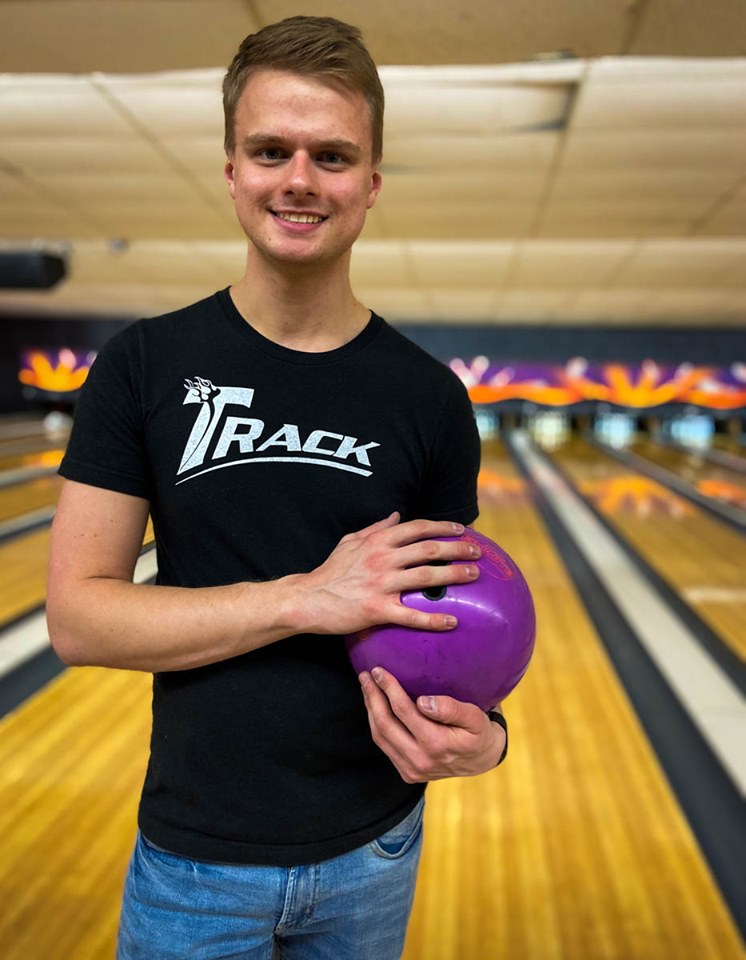
Currently, we only get a chance to practice a little together. Verity lives and works in another state couple of hours away. We only get to practice together on the weekends.
I am more willing to advise her. However, we try to share our knowledge with each other as much as we can. She has more experience from bowling at a professional level, while I have more experience with the technical side of bowling.
I think we both have a 50/50 chance at winning one game. But I am very competitive and will always say that I can beat her anytime. Now, in reality, that may not always happen.
Since you live and play in the motherland of bowling, a country in which the conditions and opportunities of this sport are undoubtedly the best in the world, do you have an overall picture of how bowling could become a popular sport in the countries where people still only treat it as a way of entertainment and cannot imagine it without a couple of beers and fried bread in their hands?
Bowling is ultimately a game; people come to bowling centers to have fun. Bowling centers don't make money from professional bowlers, so party bowling is essential to the business. To me, it is about identifying and emphasizing the differences between sports bowling and party bowling. Starting some leagues and showcasing the professional side of bowling could be a good start to get some more people involved in this sport. We also need more enthusiastic people like you to emerge, enjoy and help grow bowling as a sport.
